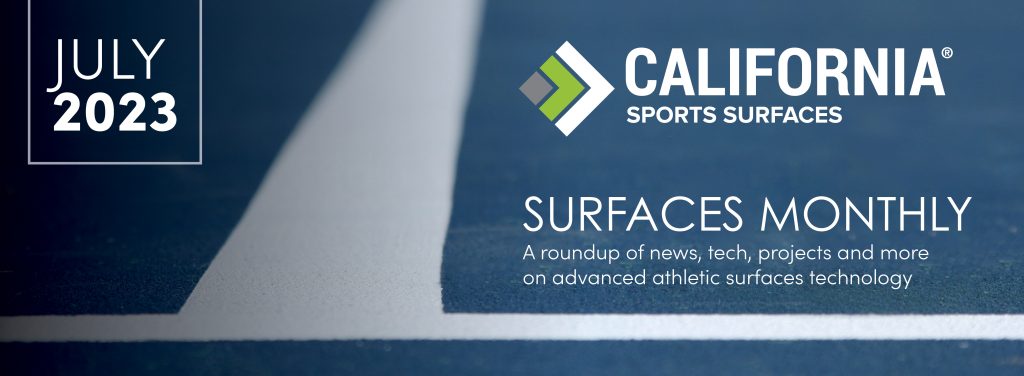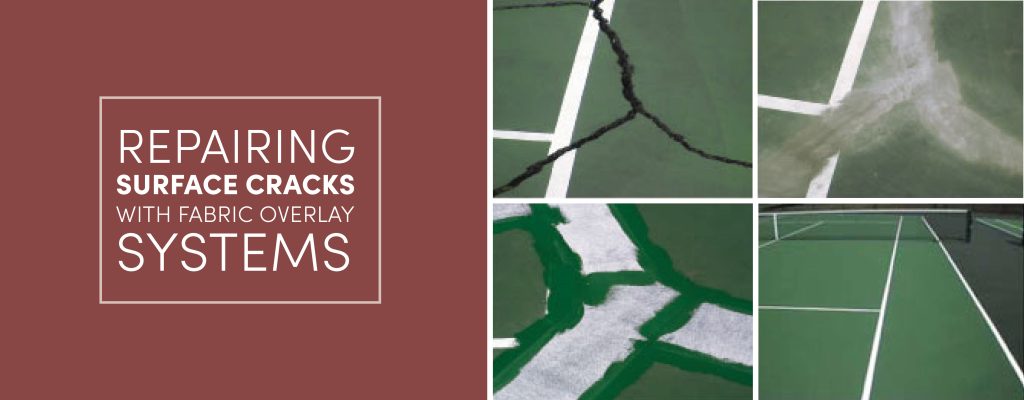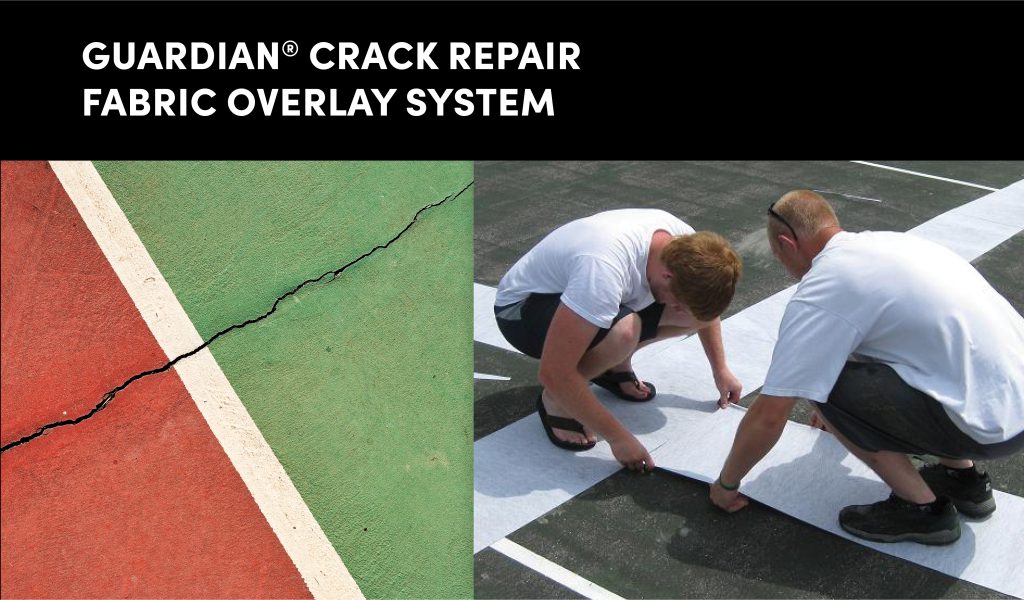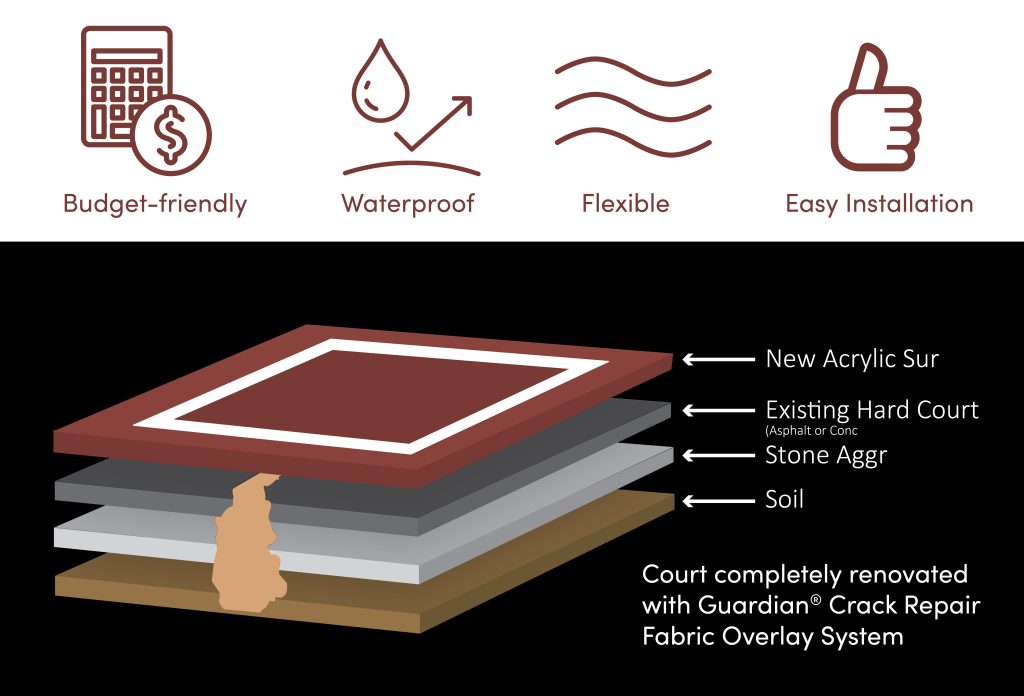Cracks are inevitable on any type of surface. As asphalt or concrete cures and shrinks over the course/lifespan of the surface, cracks will eventually start to appear. Different types of cracks tell different stories – they tell you what you might be up against. Most cracks start as smaller hairline cracks, and the sooner this issue is addressed, the longer you can delay that crack from becoming a real problem.
Sometimes small surface cracks like the ones shown in the second image (above) are indicative of a larger issue. The cause might be a compaction issue within the asphalt, or it might be moisture in the asphalt. One of the things that the American Sports Builders Association (ASBA) recommends is the addition of anti-stripping agents to the asphalt mix to help minimize moisture migration through the surface. This also helps to minimize these tiny little surface cracks from popping up. If they do pop up early in the lifespan of a court, the best way to fix the issue usually includes some sort of fiberglass mesh overlay topped with acrylic coatings, which will keep them from getting worse. Then, of course, inevitably you will run into structural cracks. Those usually come with time and with age, but they are inevitable. Once the cracks get to a certain point, as shown in the third image (above), they become a safety issue and should be addressed. These types of cracks are likely indicative of a surface that has passed its lifespan. At this point, you might want to start looking at your options and your budgets for longer-term solutions.
What kind of crack repair solutions are there?
The most basic is an acrylic crack filler, which looks like a spackle that you might use in a wall at your home, and it gets pushed down into the crack, then coated over. This solution is cost effective and easy to use and should buy you time (maybe 6 months, maybe a couple of years), but the cracks will eventually come back.
Fiberglass mesh is another solution. It’s an older technology that still works where fiberglass rolls are laid out across a court that has little hairline cracks. It’s then locked down with acrylic coatings over the course of the court, preventing those cracks from migrating through. This is usually done when you have small little surface cracks related to some moisture issues, more widespread, but not structural in nature. This process wouldn’t necessarily be a longer-term solution for larger cracks.
More recent technologies include fabric overlay systems, like our Guardian® Crack Repair, which can be locked down over the crack. You would first fill the crack with the harder substrate, typically concrete, patch and then apply this self-adhesive tape over the crack, cover it with mesh and apply the acrylic coatings over the whole surface.
This system allows the crack to expand and contract underneath without reflecting through the surface coating. It’s best for those linear cracks that start to develop on a court with age, or pavement joints that have cracked over time. May also be used over expansion joints or saw cuts on a newer surface.
There are also mat systems, such as CSS Premier Court or Rebound Ace® Air Cushion, which are intended to overlay the entire surface. These are generally used on an older court that’s getting to the end of its lifespan, but there are budget constraints, or the surface doesn’t necessitate a full resurfacing or rebuild. These mat systems are adhered around the perimeter of the court, but are free floating in the middle, allowing some minimal movement in the subsurface below the court.
The most foolproof option is an asphalt overlay. If the budget allows and the site conditions necessitate it, then the best thing to do is to repair the asphalt. You can mill and repave the existing court on site and then just put new asphalt over top, put asphalt over concrete, or even tear it out altogether and put new concrete in.
The Guardian® Crack Repair System combines an expansive fabric with an ultra-aggressive adhesive to create a repair product that is capable of 300% elongation (stretch) with longevity and durability in all types of weather and temperatures, from below freezing to over 200° Fahrenheit. A budget-friendly, long term repair method that is easily and quickly installed and coated with standard tennis court acrylic coating materials. Most importantly, the Guardian® Crack Repair System is waterproof. By preventing water from penetrating into the newly repaired crack, the deterioration of that crack is significantly reduced. Thus, the long-term success of the new repair is assured.
Need help with your next project? Contact us!







